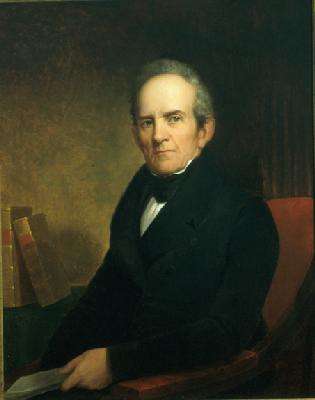The Volokh Conspiracy
Mostly law professors | Sometimes contrarian | Often libertarian | Always independent
Today in Supreme Court History: September 1, 1823
9/1/1823: Justice Smith Thompson takes judicial oath.

Editor's Note: We invite comments and request that they be civil and on-topic. We do not moderate or assume any responsibility for comments, which are owned by the readers who post them. Comments do not represent the views of Reason.com or Reason Foundation. We reserve the right to delete any comment for any reason at any time. Comments may only be edited within 5 minutes of posting. Report abuses.
Please to post comments


Ah. Look what is back.
Justice Thompson was on the Supreme Court for around twenty years but did not have too much influence. He is mostly forgotten. To be fair, so are most of the justices of the era.
He was Chief Justice of the New York, replacing the influential James Kent. Smith was later Secretary of the Navy under Monroe. Thompson ran as governor of NY while on the Court.
One interesting footnote is his dissent in Cherokee Nation v. Georgia. Marshall welcomed a dissent to his opinion that denied Native American tribes standing as foreign nations.
He wrote Kendall v. United States:
A unanimous decision, written by Justice Smith Thompson, went against Kendall holding that (1) not every officer in the executive branch was under the exclusive control of the president; (2) Congress could assign ministerial duties to such officers, and (3) such duties could be enforced by a writ of mandamus issuing from the federal circuit court. The case was significant because it resolved a conflict between the executive branch and Congress, while at the same time establishing a role for the courts in resolving such disputes. It clarified the mandamus-granting authority of federal circuit courts.
https://www.oxfordreference.com/display/10.1093/oi/authority.20110803100033386
Thompson, as Chief Justice of the New York Supreme Court of Judicature (the state's highest court of law before 1848), wrote the opinion in In re Waldron (1816). John Waldron had become insolvent. His pregnant wife went to live with her parents, where she gave birth to a daughter, Margaret, and died soon thereafter. Her parents had supported both her and the child.
After his wife's death, Waldron attempted to obtain physical custody of his daughter, but the grandparents refused. He filed an application for a writ of habeas corpus. The court denied his application, holding that it was within its discretion to do so. Waldron was an early and influential American case in establishing the principle of "best interest of the child" as superior to parental rights in custody cases, though some critics have viewed it as an example of discrimination against the poor.